Systems
Arch-OS
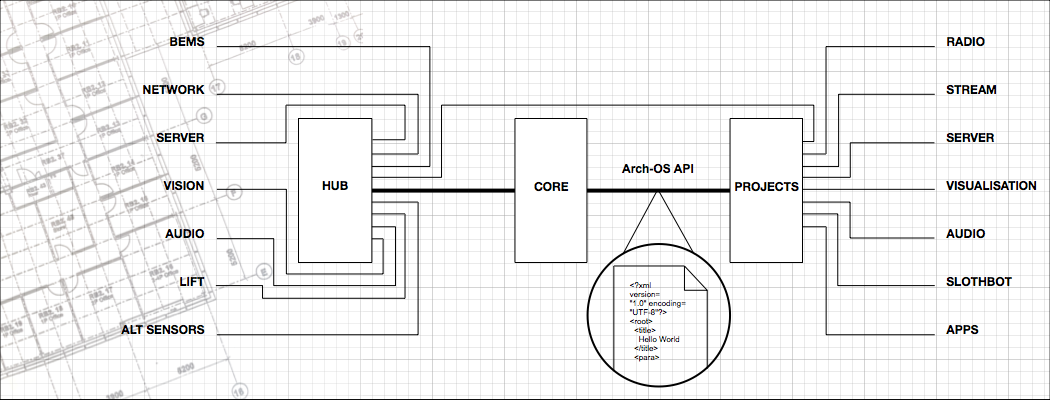
Arch-OS represents an evolution in intelligent architecture, interactive art and ubiquitous computing. An ‘Operating System’ for contemporary architecture (Arch-OS, ’software for buildings’) has been developed to manifest the life of a building and provide artists, engineers and scientists with a unique environment for developing transdisciplinary work and new public art.
I: Arch-OS: integrates industrial BEMS harvesting data to reveal patterns in building usage over time; data networks for real time network traffic modelling; internal processes and online visitors; tracks the flow of people around the building in real time; listens for fluctuations in sound levels; monitors lift usage, integrates zoning and the ‘Random Lift Button’; integrates bespoke sensors based on Xbee, Arduino and Electric Imp technologies.
/
O: Arch-OS outputs: radio feeds; data streams; server feeds; visualisations; sonifications; interactive robotic architecture; mobile monitoring/interactive apps.
The Arch-OS experience combines a rich mix of the physical and virtual by incorporating the technology of ’smart’ buildings into new dynamic virtual architectures.
Bio-OS
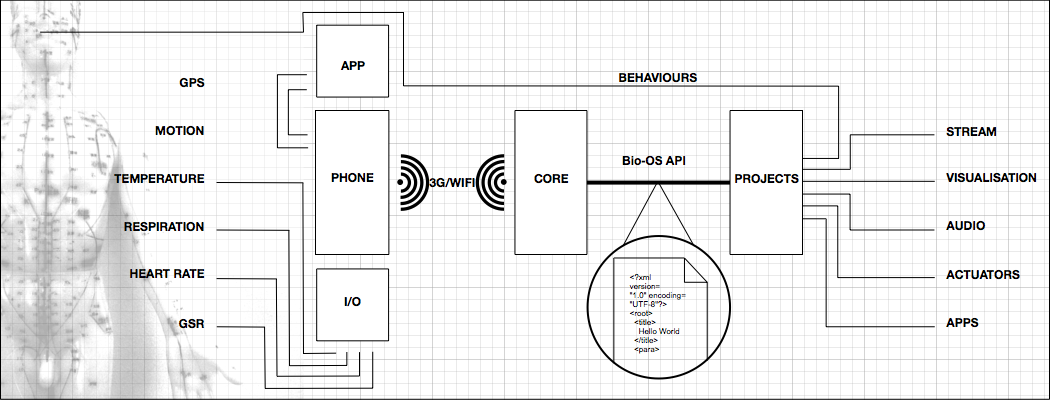
I: Bio-OS integrates: mobile phones and apps to capture and broadcast real time data including – biological states such as temperature, respiration, heart rate and Galvanic skin response. Bio-OS integrates location and movement.
/
O: Bio-OS correlates relationships between these parameters overtime to enable: live data streams; visualisation and sonification of body states; the control of environmental factors to modify physical behaviour (such as light, sound, robotic walls and remotely controlled door locks); bio feedback to the user through software and wearable technologies.
Eco-OS
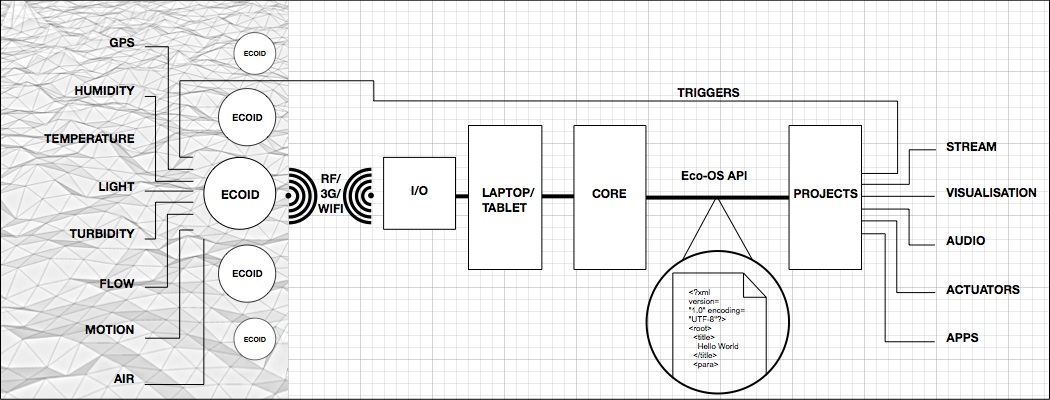
I: Eco-OS incorporate remote networked sensors (ecoids) to harvest a range of environmental data such as: temperature, light, humidity, movement, wind speed, air quality, water turbidity, water flow. Ecoids can be powered through battery mains or solar power. Various formations of star or mesh networks as well as isolated individual installations to broadcast data or record locally.
/
O: Ecoid network data is broadcast to a coordinator and then to the Eco-OS server. Real-time data feeds can be streamed, visualised, sonified, used to control physical objects and manipulated through software and mobile phone apps.
S-OS
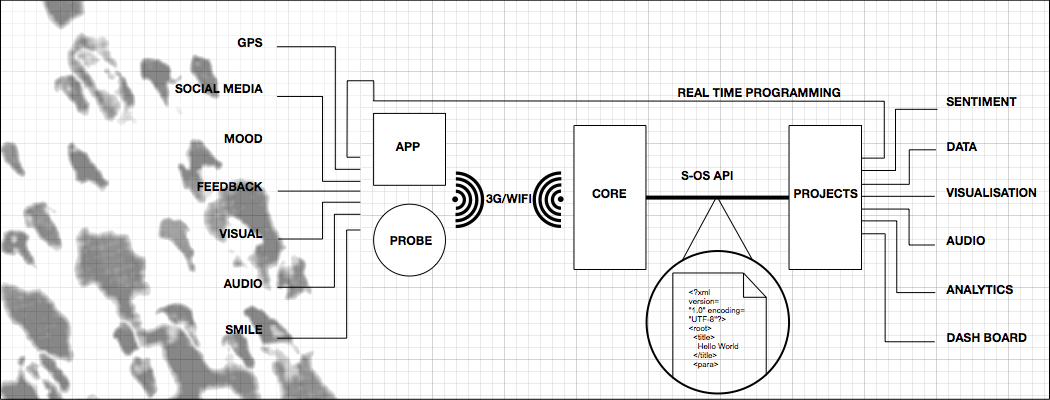
I: S-OS captures and integrates: audience feedback and mood through software app; audience location and movement; smile recognition; listens for fluctuations in audio; the motion of crowds through physical ‘probes’; feeds of arts organisations databases for event information; allows selection and feedback within specific time frames; harvests Social Media feeds.
/
O: The S-OS web engine applies a range of analytics to the harvested data correlating: GPS hotspots and audience flow; sentiment analysis; overall event mood; audience evaluation; numbers of visitors; social media posts. All of these processes are displayed to the audience and event organisers to enable a participatory real-time programming of cultural events.
Dome-OS
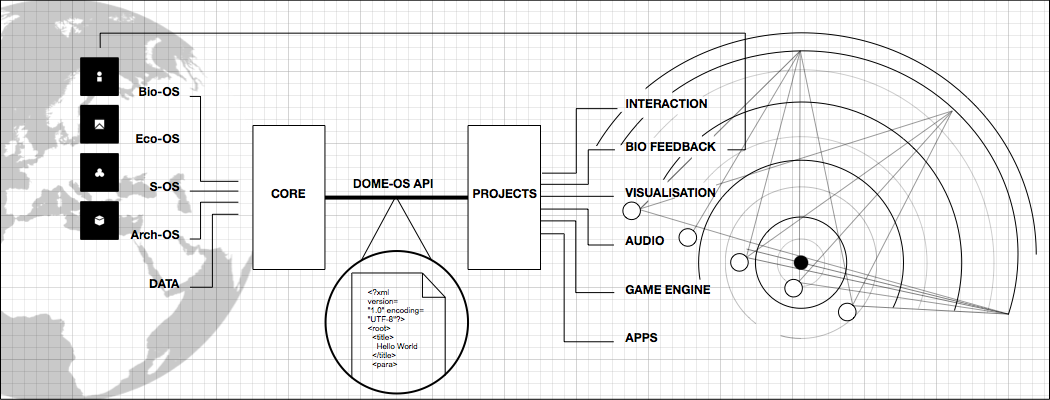
I: Dome-OS is designed to access live and recorded feeds from all of the above Operating Systems and data from a variety of disciplines, ranging from Psychology, medial, entomological to Earth Sciences.
/
O: Through the use of data feeds, 3D modelling software, game engines and physical sensors Dome-OS provides high resolution visualisations and sonifications for FullDome environments.
The system has been developed for single fish eye projector FullDomes, such as the Immersive Vision Theatre and i-DAT’s inflatable domes. It can be used in multi-projector scenarios fitted with real-time inputs.